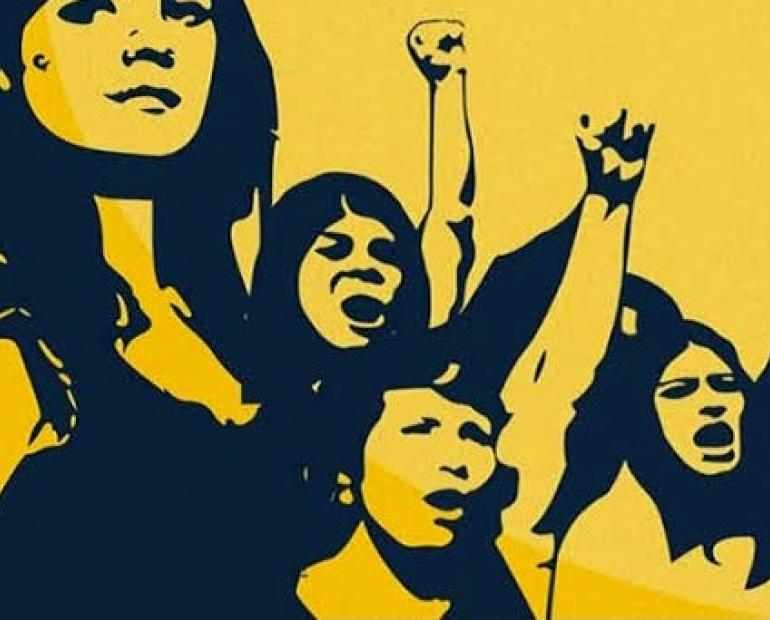
Over time, the gender binary has governed everything from how much someone gets paid to who can have certain hobbies. The impact of the gender binary on women has been extreme, and although some people believe that we have achieved gender equality, the structures that reinforce inequality are still in place. Breaking down the gender binary can improve the quality of life for everyone, and create a stronger economy. But first, we have to understand what it is and why it’s important.
What is the Gender Binary and Who Does it Affect?
The gender binary is a construct of culture that reinforces the idea that the only genders are “Man” or “Woman.” It also supports and promotes the idea that women and men have inherently different skill sets, determined from birth and predisposing them to particular lifestyle choices, social behaviors, and even careers. These character traits and interests aren’t tied to biology, however, and neither is gender.
Gender is not predetermined based on the body a person is born with, or on the gender that they are assigned. Women are no more likely to enjoy cooking than men, and men are no better equipped to be lawyers or scientists than women. The reinforcement of these ideas is harmful to everyone and starts at a young age. Even the toys that the youngest children are given often reinforce the idea of gendered skills and interests.
As children, boys are steered towards toys and media that focus on aggression and fighting, while girls’ toys are more concerned with physical attractiveness and nurturing. This helps build the idea early on that men are expected to be aggressive, and women nurturing. This constructed idea is reinforced throughout media, laws, and unconscious bias. In the end, the gender binary affects everyone.
What Are the Benefits of Breaking the Binary?
From a financial standpoint, research has shown that diversifying the representation within a brand or industry creates a stronger, more successful business. Whether by creating products designed for both men and women or building gender-neutral advertising, heavily gendered industries like the makeup industry can bring new demographics into the fold, fostering innovation, and promoting all-gender inclusion. Promoting this type of acceptance can go a long way in breaking down the toxic masculinity inherent in the gender binary, and even improving mental health. Diversifying industries that have been traditionally segregated by gender also brings new perspectives to products, business practices, and consumer interest.
Women have long been barred from entering industrial and technical industries, but as women move into these male-dominated fields, these sectors are continuing to flourish. Women now make up 41% of video game consumers, for example, and have added a new demographic to the industry. Bringing people of all genders into these areas, both on professional and consumer levels, adds new points of view about representation, sexism, and what people can do and be.
Being able to fix your own car is great, but is usually seen as a skill held by men. Encouraging people of all genders to learn skills previously limited to only men or women, not only challenges gender norms, it can help the economy. Bringing women into industries dominated by men and encouraging interest in traditionally male pursuits makes women more financially independent and prepares them for any emergency. On the other side, supporting men in exploring female-centric industries makes men able to more freely express themselves, and can improve their mental health.
How Do You Break the Binary?
Offering gender-neutral toys and encouraging children to take part in activities usually reserved for the opposite sex can go a long way in establishing that gender is not tied to a particular interest while encouraging self-expression from a young age. Similarly, enthusiastically supporting teenagers and adults in their interests and professions can support their mental health, sense of well-being and provides them with a support network that supports their emotional and mental well-being. f you want to make a wider, you can channel your support into becoming an advocate for gender equality and representation.
Advocacy happens on many levels, from neighborhood and community efforts, to state or national organizations. You may want to focus on supporting women and girls in STEM, helping women and gender non-conforming people find jobs, or even create your own physical or digital space that supports gender diversity. If you are a business owner or have a hand in the hiring process, you can take steps to improve gender equality in the workplace.
Implicit or unconscious bias is a set of attitudes or ideas that we are unaware of, but that affect decisions we make and actions that we take. Identifying trends in the gender of those who are promoted, have the highest salaries, and are given the greatest responsibilities can be the first step in identifying workplace bias. addressing this. Approach promotion applications by determining skill-based requirements, then comparing all candidates against that profile, and heavily consider why you may not consider a woman as capable as a man with similar credentials. Is it because she just had a child and you assume she won’t be able to handle a large project? Would you make the same assumptions about her male colleague?
From the time children are born, they are put into one of two categories. Many people believe that biological sex determines gender and affects what someone can achieve. As we understand more and more about the gender spectrum, we have to investigate the effect of a binary system on women, men, and all those in between. Breaking down the gender binary creates greater economic security for women, improved mental health, and helps industries to thrive, in ways they never could have before.





